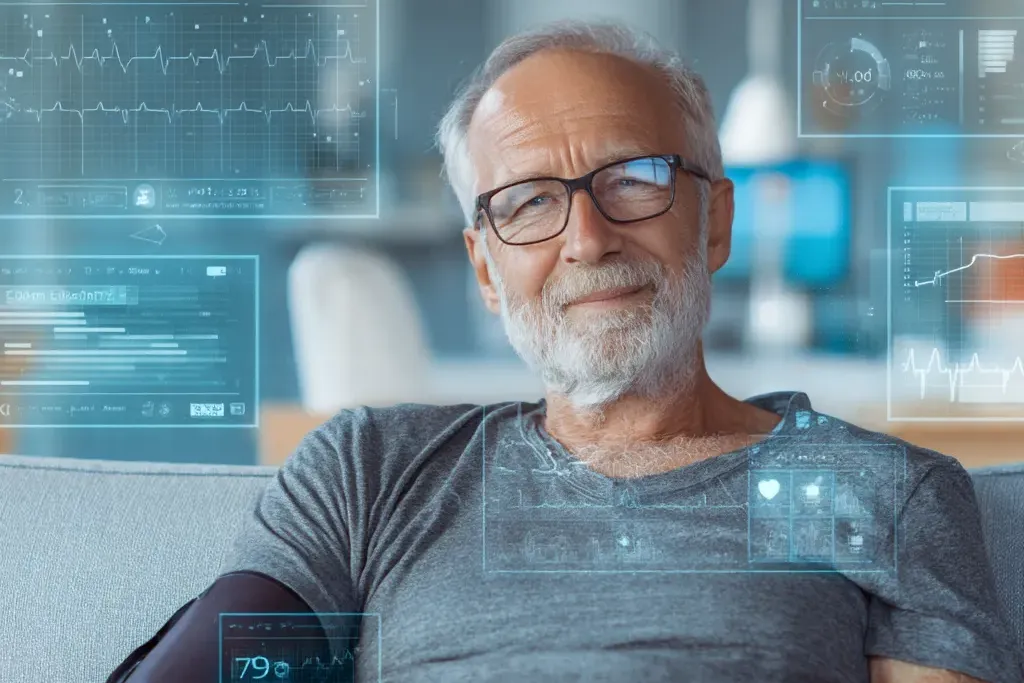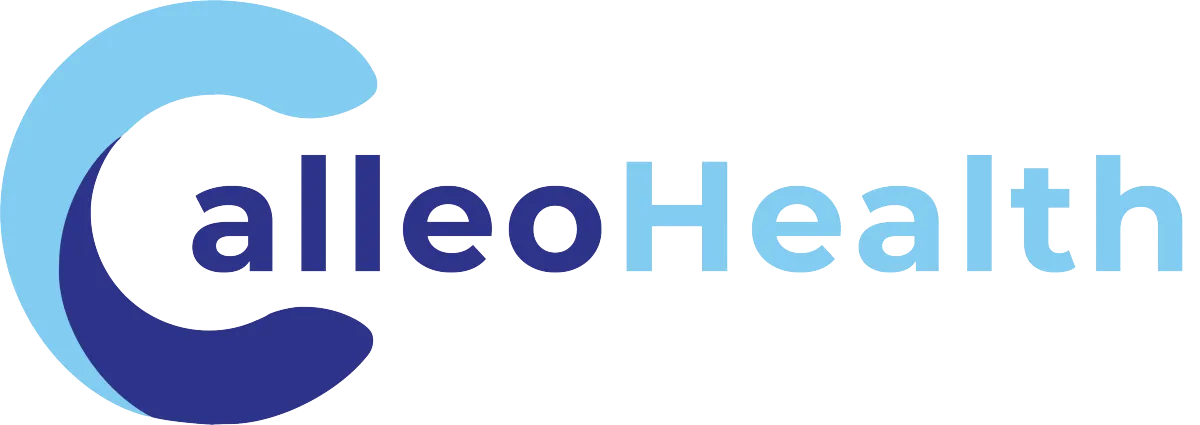
Remote Patient Monitoring: A Provider's Quick Guide
Remote Patient Monitoring: A Provider's Quick Guide
I. Introduction
Healthcare is undergoing a transformation—driven by innovation, digital integration, and a growing need to deliver high-quality care beyond the four walls of traditional clinical settings. One of the most impactful shifts in this transformation is the rise of Remote Patient Monitoring, RPM (sometimes defined as Remote Physiological Monitoring), also known as remote physiological monitoring and remote patient management, a care model that allows providers to track and manage patients’ health data in real time, regardless of their location.
As the industry shifts toward value-based care and patient-centric models, and even within traditional fee-for-service models, RPM has become a vital tool for improving outcomes, increasing provider efficiency, and expanding access to care. This blog explores what RPM is, its core benefits, use cases, how to implement it effectively, the financial upside, and the role it will play in shaping the future of healthcare.
II. What is Remote Patient Monitoring?
Remote Patient Monitoring refers to the use of digital technologies to collect and transmit medical data from patients in one location (typically their home) to healthcare providers in another. These data points may include blood pressure, oxygen saturation, heart rate, glucose levels, and other vital health indicators. Unlike telehealth, which requires scheduled, synchronous virtual visits, RPM provides consistent data, giving providers actionable insights into their patients' day-to-day health. RPM is an objective tool that provides trending, consistent data even if a patient forgets or chooses not to share blood pressure or other accurate vital sign readings with their providers.
What distinguishes RPM from traditional in-person care is its frequency and accessibility. Instead of relying on a single snapshot during an office visit, providers receive a steady stream of information that reflects the patient’s true baseline and fluctuations. An effective RPM program typically involves three key components: the device (e.g., pulse oximeters, smartwatches, blood pressure monitors), secure data transmission, and meaningful provider-patient communication. This trio enables clinicians to offer high-quality, proactive care, even from afar, while better engaging the patient in their own care.
III. Why Remote Patient Monitoring Matters
Remote Patient Monitoring is more than a convenient tool—it’s a response to some of the most pressing challenges in healthcare today. With chronic illnesses on the rise and the aging population growing rapidly, the demand for frequent and personalized care has never been greater. RPM empowers clinicians to stay connected with these vulnerable populations, track symptoms, and intervene early—before complications escalate into emergencies. A well designed RPM program has been proven to reduce blood pressure and improve other vitals over some time.
In addition to its role in a FFS model, RPM is also a natural fit for the goals of value-based care. Instead of reacting to problems, it enables providers to prevent them. This shift reduces hospital readmissions and unnecessary ER visits, improving patient satisfaction while decreasing costs. According to MedCity News (Al Woo, 2025), “well-designed RPM programs reduce the need for in-person visits and empower patients to engage more directly with their own care.” Patient empowerment is a crucial outcome of RPM—when individuals are consistently engaged with their providers and see how their health data is being used, they’re more likely to adhere to care plans and make informed lifestyle choices.
IV. Benefits of Remote Patient Monitoring
For patients, the benefits of Remote Patient Monitoring are substantial. It creates a continuous line of communication with their care team and promotes better adherence to treatment plans. Rather than relying on memory or guesswork, patients can see their real-time metrics and better understand the impact of daily choices. RPM also minimizes the need to travel—especially important for elderly patients, those with mobility and/or transportation issues, or those in rural areas. By enabling care at home, RPM provides convenience without compromising quality. Moreover, RPM can also provide peace of mind to family members, knowing their loved one is being monitored, and with appropriate permissions, they can also access the data.
For providers, RPM unlocks access to real-time data that enhances clinical decision-making. With a constant flow of accurate, patient-generated health data, clinicians can respond quickly to subtle changes in condition. This means fewer surprises, better outcomes, and ultimately more efficient care. RPM also enables practices to increase patient volume without overcrowding waiting rooms. And with new billing codes offering reimbursement opportunities, RPM represents a scalable and profitable way to deliver high-impact care. As noted by the Financial Times (Sarah Neville, 2025) virtual hospitals are already leveraging RPM to treat patients remotely, easing the burden on physical healthcare infrastructure while improving access and outcomes.
V. Common Use Cases and Conditions
Remote Patient Monitoring is especially beneficial for chronic condition management. Patients with diabetes, for example, can use glucose monitors that automatically share data with their provider, reducing the need for frequent office visits and allowing more precise insulin adjustments. Similarly, individuals with heart failure or COPD benefit from daily tracking of weight, oxygen levels, or respiratory status—early warning signs that can help avoid hospitalizations.
Beyond chronic care, RPM has become a valuable tool in post-surgical follow-up. Patients recovering from surgery can be monitored for signs of infection, irregular vitals, or medication side effects—all from home. For geriatric patients, RPM technology can include fall detection systems and emergency response buttons, making aging in place safer and more viable. Even mental health professionals are exploring RPM applications through mood tracking and sleep analysis using wearables. These use cases show how RPM extends across specialties and care settings, making it a versatile, future-ready solution.
VI. How to Implement RPM in Your Practice
Implementing Remote Patient Monitoring begins with assessing which patients will benefit most. Focus on individuals with chronic conditions, recent hospitalizations, or mobility limitations. Consider their access to technology and willingness to engage with digital tools. Once you identify the right population, the next step is choosing the right technology partner, one that offers user-friendly devices, seamless data integration with your EHR, and comprehensive support.
Next, develop internal workflows to determine how data will be reviewed, who will act on alerts, and how follow-ups will be documented. Assigning clear responsibilities across your team will help ensure accountability and consistency. Don’t forget patient education—providing support materials and ongoing tech help will boost engagement. Lastly, confirm that all systems are HIPAA-compliant and that patient data is stored securely. With these steps in place, your practice will be positioned to scale RPM smoothly and deliver high-quality, remote-first care.
VII. Reimbursement and ROI
Remote Patient Monitoring not only enhances care—it can also enhance your practice’s bottom line. Medicare and many private insurers now offer reimbursement for RPM services through CPT codes 99453 (initial setup and education), 99454 (device supply and data transmission), 99457 (first 20 minutes of clinical time), and 99458 (each additional 20 minutes). These codes allow practices to generate revenue monthly per patient, making RPM a sustainable business model.
The ROI becomes especially clear when considering how scalable RPM can be. For instance, a practice with 100 patients enrolled in an RPM program could generate several thousand dollars in revenue each month—while also reducing strain on clinical resources. Technology investments in RPM platforms, training, and support services are quickly offset by this recurring reimbursement structure and the long-term savings from avoided ER visits and complications. Whether you're a small clinic or a large system, RPM can strengthen your financial performance while improving care quality.
VIII. Challenges and How to Overcome Them
Despite its advantages, adopting Remote Patient Monitoring is not without its hurdles. Common technology barriers include device interoperability and internet connectivity—especially in rural or underserved areas. Another challenge is ensuring patients understand and are willing to use the technology. Offering patient-friendly instructions, videos, and tech support is key to overcoming digital literacy gaps.
On the provider side, integrating RPM into existing workflows can create initial friction. Staff may need to adjust how they review and respond to alerts, and roles may need to shift. Defining responsibilities and using automation tools like dashboards or triaging filters can streamline adoption. Regulatory compliance is also critical—your RPM solution must be HIPAA-compliant and use secure data encryption. These challenges are surmountable with thoughtful planning and the right partnerships. When approached strategically, RPM can be seamlessly woven into your care model.
IX. The Future of Remote Patient Monitoring
The future of Remote Patient Monitoring is bright and brimming with innovation. One of the most exciting developments is the integration of AI and predictive analytics, which can analyze patterns in patient data and flag health risks before they become clinical problems. This proactive capability is already being piloted in high-risk patient populations, with impressive results.
Additionally, deeper integration with Electronic Health Records (EHRs) will provide a more complete, real-time view of the patient journey, making RPM data easier to access and act upon. RPM is also becoming central to hybrid care models—blending virtual and in-person services into a cohesive, patient-first experience. Finally, the rise of at-home diagnostic tools and next-gen wearables means patients can collect increasingly sophisticated health data from their living rooms. In short, RPM isn’t just evolving—it’s becoming a cornerstone of modern healthcare delivery.
X. Final Thoughts
Remote Patient Monitoring offers a powerful way to deliver proactive, personalized, and scalable care. From chronic disease management to post-op recovery, RPM empowers providers to intervene early, make data-driven decisions, and build stronger relationships with patients. For patients, it offers peace of mind, greater convenience, and better health outcomes.
Whether you're a small practice looking to increase efficiency or a large system aiming to enhance your value-based care strategy, RPM can be a game-changer. With thoughtful implementation, the right technology, and a focus on patient engagement, your organization can be at the forefront of the digital health revolution.
Ready to Bring RPM to Your Organization?
At CalleoHealth, we specialize in helping healthcare organizations integrate healthcare innovations to scale solutions like Remote Patient Monitoring to improve outcomes, enhance efficiency, and drive sustainable growth.
Want to explore what RPM could look like for your organization?
Let’s talk strategy, implementation, and real-world ROI.
Schedule a free consultation
Discover how to streamline RPM enrollment, optimize workflows, and unlock new reimbursement opportunities.
CalleoHealth: Bridging healthcare innovation with real-world results.
👉 Schedule your consultation with CalleoHealth today and take the first step toward future-ready care.

